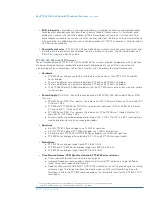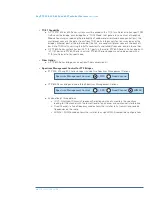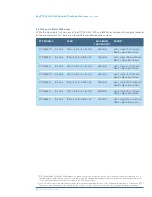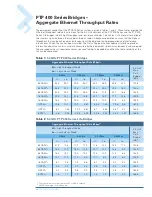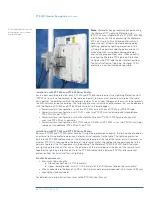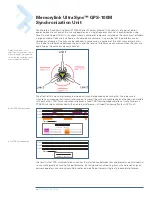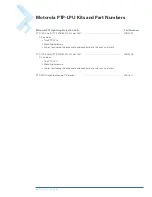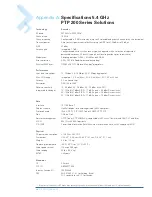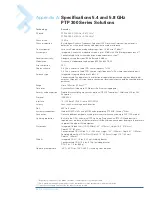
PTP SOLUTIONS GUIDE
36
5.
What security measures should be used along with the built-in over-the-air security?
In addition to the scrambling and matched-radio security included with all PTP 300, PTP 400, PTP 500 and
PTP 600 Series radios, FIPS-197 compliant, 128-bit or 256-bit AES Encryption can be added as an option to
meet specific security requirements. Motorola also encourages encryption of data before it is transmitted
by using the security measures built into routers, network devices and web sites in order to ensure
end-to-end protection of data.
6.
Are the pTp 300, 400, 500 and 600 Series radios 80.11a devices?
The PTP 300, 400, 500 and 600 Series bridges use different encoding and radio transmission systems than
802.11a. In areas where 802.11a systems are operating, they will detect the 802.11a radio signals and
choose a clear channel away from any interference.
7.
Will the pTp 300, 400, 500 and 600 Series radios interfere with my Canopy
®
access network?
Flexibility is a key value driver of Motorola solutions. The PTP 300, 400, 500 and 600 Series systems have
been designed to interoperate with Canopy AP clusters operating in the same frequency band. There are
certain considerations that network operators must make during installation, including frequency allocation,
vertical separation and angular direction of the modules. Refer to the User Guide for collocation information.
8.
How do pTp 300, 400, 500 and 600 bridges avoid interference from other devices nearby?
At initialization, the systems monitor the available frequency channels to find a channel that is clear of
interference. During operation each radio continuously monitors the spectrum, sampling the band up to
1,200 times a second for PTP 600 radios or up to 400 times a second for PTP 300, 400 and 500 radios.
When interference is encountered, the radio automatically switches to the clearest channel.
9.
When do I use the pTp 300, 400, 500 and 600 Series solutions?
PTP 300, 400, 500 and 600 Series point-to-point wireless Ethernet bridges have been developed to enable
network design that meets the needs of service providers and network operators. Motorola has expertise
that can help develop a profile of the current and estimated future demand of the network to provide
sufficient capacity to meet service demands. Even in the most challenging environments, the unique
combination of innovative technologies enables operators to achieve a reliable and high-throughput link for a
wide variety of applications, including:
• Backhaul to connect clusters of users to the backbone without wires
• Long-distance connectivity to traverse geography (e.g., open terrain, water, etc.) without relays
• Non-line-of-sight (NLoS) or near-line-of-sight (nLoS) performance where other solutions often cannot
make the connection
• Spectral efficiency to place more links at hub-sites without creating interference
• Redundancy and additional capacity for 6 GHz networks and wire-line circuits
• Cost-effective connectivity between buildings
• Video surveillance extensions beyond existing fiber/coax wired infrastructures
• Enterprise voice and data connectivity
• Disaster recovery and temporary deployments for activities such as tactical military operations,
emergency services, security and surveillance, and short-term entertainment and sporting events
• Bandwidth-intensive communications such as distance learning, telemedicine, streaming video and
multimedia
• U.S. Federal and NATO uses such as battlefield communications, tactical military operations, border
security and video surveillance
FAQs
continued


